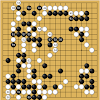It was already discussed in this website the implications of
the Two Economy. In general, the Two Economy pertains to the economy of the
rich and the poor in a country.
The two circle diagram is commonly used in explaining two
variables with different implications and similarities at some points. The
first circle consists of the total income of the rich while the second contains
the income of the poor. The union of the circle (the middle) is the income of
the middle class. Inside each circle, you will see a line labelled H and L. H
means high and L means low. This implies that there are high income rich and
poor; and, low income rich and poor. Low income rich and high income poor can
be classified as middle class.
The main goal of this analysis is to figure out ways to
converge the two circles. That is, how are we going to convert the low income
poor into high income poor? What are the projects and policies that will push
the changed?
You might ask if there is a solution for the problem; there
is. The main problem is in the system, and the system must be fixed. The
government has the entire budget to implement the projects and polices needed
for economic development. Yet, how they make use of time and resources is the
question. The other question is, is there a way to speed up and simplify the government
process?
The biggest challenge is in the government and the
initiatives should be supported by the public. This is a symbiotic
relationship, the government alone will not solve the economic problem; and,
public alone will not also. Thus, both are required to act simultaneously.
The problem is too abstract that solution requires
abstraction; abstract in the sense that the solution is a change of mind-set.
When the government is timely implementing sustainable projects and policies;
and the society is cooperating, then slowly the circle will converge.
The sooner we realized that we need to move, the sooner we
will achieve the one economy.
The other challenge is how to two converge the Two Economy
while balancing it with inflation and environment.








0 Comments